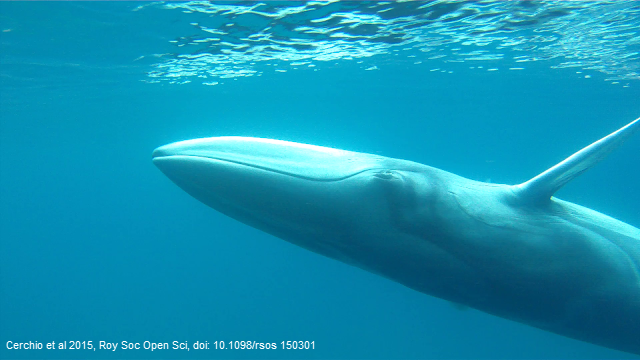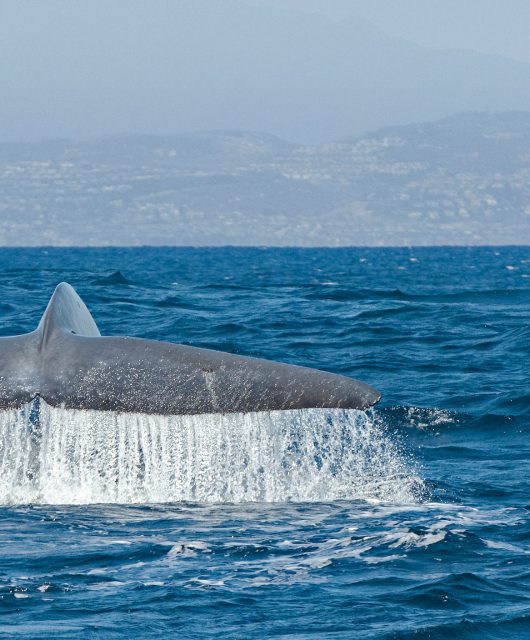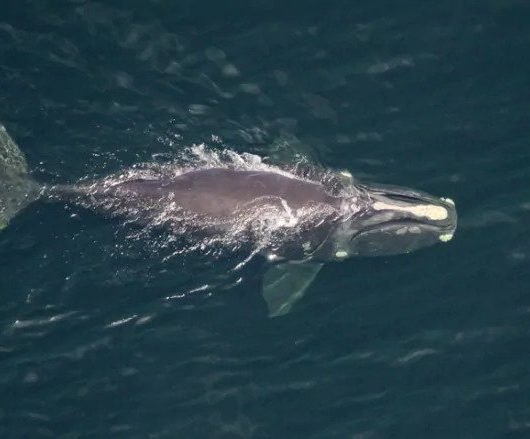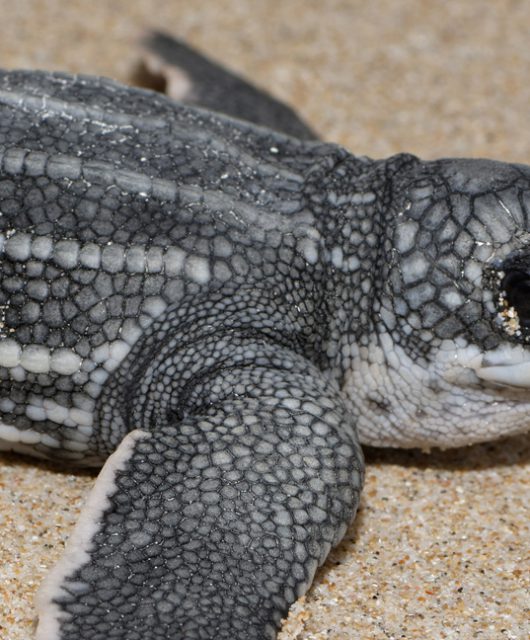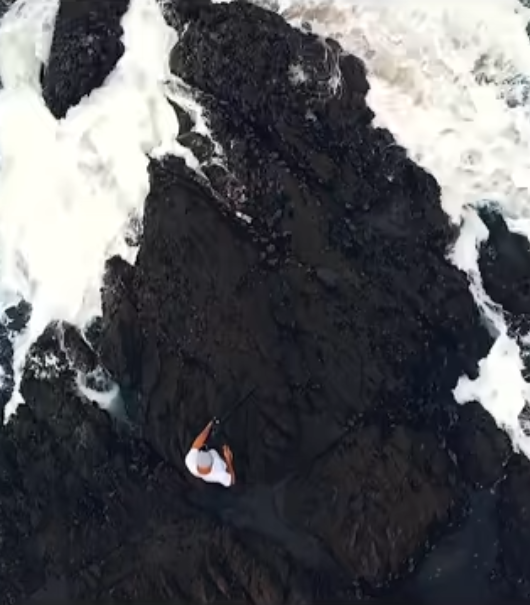Baleen whales eat swarms of tiny crustaceans called zooplankton, and they engage in all kinds of tricky tactics to get the biggest mouthful of food for the smallest amount of effort.
There are plenty of videos of baleen whale feeding events posted on YouTube, but the video above is one of my favorites from the BBC.
The Challenge
Whales are marine mammals, which means they breathe air. When they feed on underwater creatures, they have to do it while holding their breath, and that takes a tremendous amount of energy. Imagine swimming around underwater in a pool while trying to capture and swallow a swimming fish – it would not be easy!
All Together Now!
Luckily for baleen whales, zooplankton also need to stay together in large swarms because it makes it easy for them to find mates and helps them avoid being eaten by fish. Swarming behavior allows whales be very efficient eaters by swallowing many zooplankton in one giant gulp, like you see in the video above.
On the Move
Some whales also take advantage of migration patterns of zooplankton to make feeding more efficient. Many krill species, migrate to the surface at night to feed on phytoplankton, and then migrate deep near the seafloor during the day to avoid predators that hunt by vision, like fish. This behavior is known as diel-vertical migration (see figure below). Some baleen whales like Sei Whales wait until night when the krill are aggregated at the surface and do all their feeding at night, to avoid having to spend energy diving deep for their food.
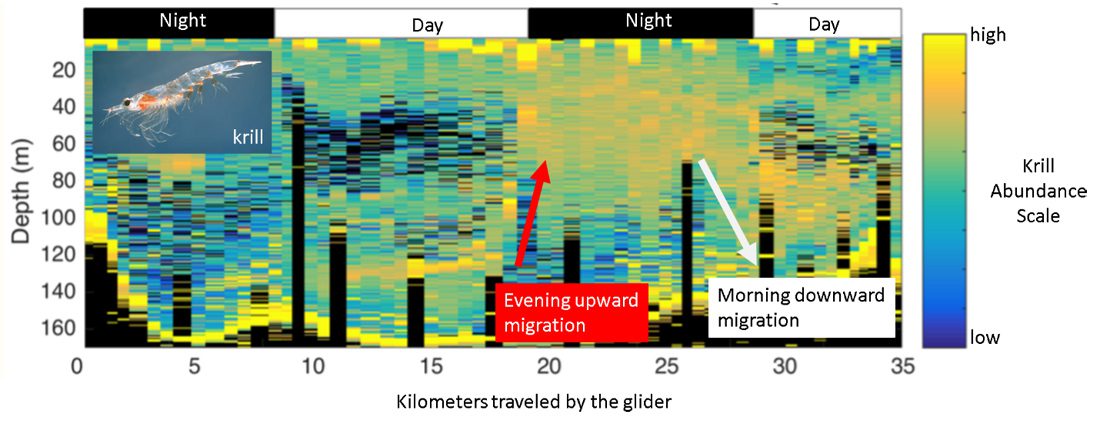
We can measure the diel-vertical migration process using active acoustic echosounders, which we have mounted on our gliders. Acoustic echosounders work much like the echolocation used by dolphins – a pulse of sound is sent out, the sound reflects off of a surface (such as a layer of zooplankton) and then returns to the source of the sound. The difference between the sound sent out and the sound received tells you something about how many zooplankton are out there, and what they are doing. An example of the echosounder data showing diel-vertical migration from one of our gliders is given in the figure above.
In order to know how much zooplankton is out there by the difference in sound, the echosounder has to first be calibrated in a big tank. This is done by hanging a small sphere of known composition underneath the echosounder and recording how much sound reflects off of the sphere. In the photograph below, graduate students Gennavieve Ruckdeschel and Tara Howatt are suspending the glider in Dalhousie University’s Aquatron tower tank, which is 30 m deep, to perform this calibration.
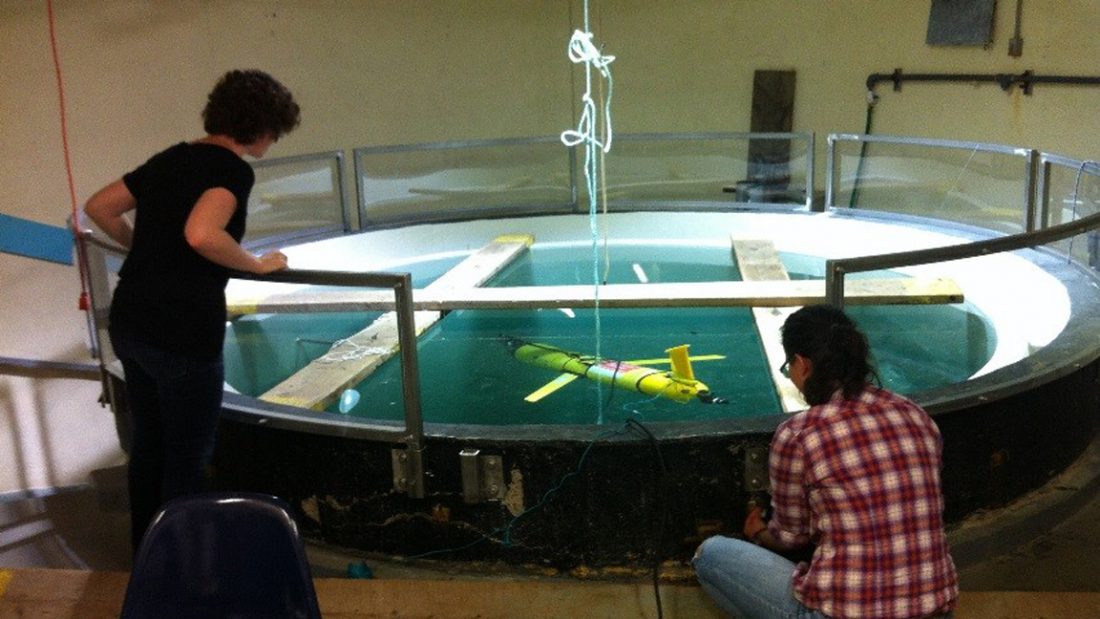
This post was written by guest blogger Kim Davies, Liber Ero Postdoctoral Fellow, Department of Oceanography, Dalhousie University.

